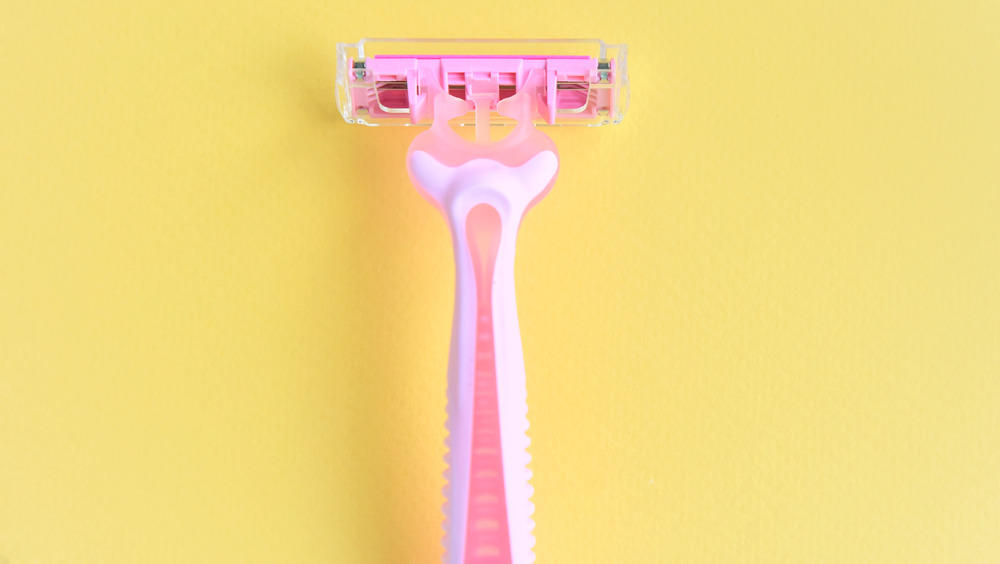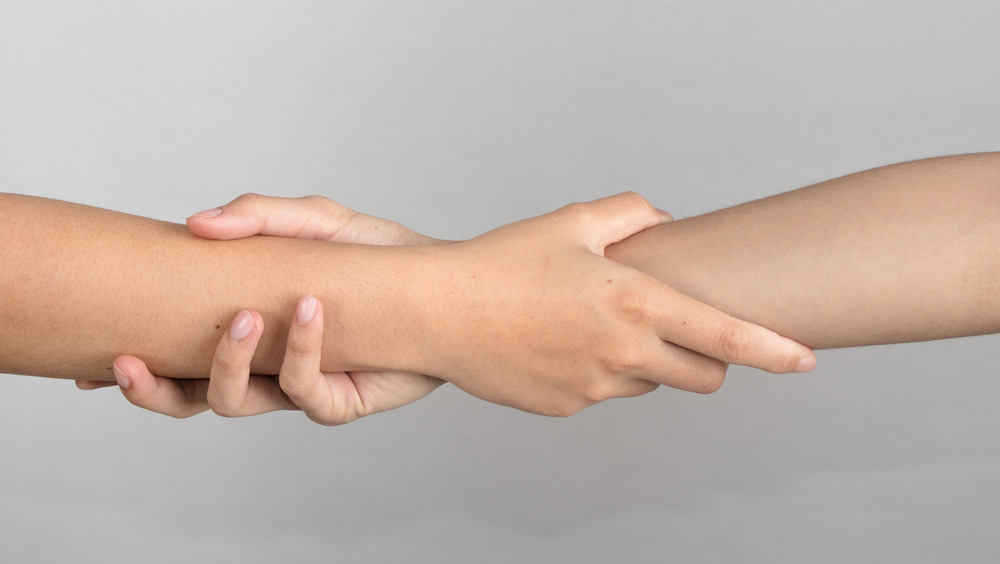What You Should Know Before Shaving Your Arms
There's a lot of meaning attached to body hair and whether you chose to keep it or not. A study by Mintel found that while 92 percent of people said they shaved their legs in 2012, this dropped to 85 percent in 2016. Body hair trends change with the times. But Gillette Venus highlights that if you're going to shave your hair, it's always better to know what you're doing. So, here's what you should know before shaving your arms. To start, as Health Digest points out, the idea that hair grows back faster, darker, and thicker after it's been shaved is, in fact, a myth.
According to Healthline, it takes your body hair about one month to grow to its full potential. It won't just continue growing if you don't manage it. And you shouldn't treat all of the hair on your body the same. Dermatologist Ella Toombs, MD, FAAD, told Bustle that if you're considering shaving your arm hair, you need to consider the shape of your arms to avoid cutting them. She says that while your arms aren't more sensitive, you "must respect the creases, folds and curves."
What happens when you shave your arms
You may be putting off shaving your arms for fear that your hair will grow back thicker. However, Everyday Health points out that research dating back to the 1920s has found that shaving has no bearing on hair thickness. "It's a common belief because when hairs grow out naturally, they taper at a sharp point, so they look thinner," dermatologist Jessica Wu, MD, told the publication, "However, shaving hair cuts it at a blunt angle so hairs look thicker — you see the cross-section of the hair."
Dr. Wu pointed out that when you shave your body hair, the part you're removing is dead and it doesn't affect the follicle. This means that it won't change the new hair that grows through. While shaving your arms doesn't affect new hair growth, the American Academy of Dermatology Association suggests that you only shave wet skin which will remove dead skin cells and oil. They also recommend using a gel or cream to prevent friction and to make sure your razor is clean.
In order to prevent irritation you shouldn't shave the same spot repeatedly, shouldn't push down on your razor too hard, and moisturize your skin afterward (per Gillette Venus). This advice applies when shaving any part of your body. How you shave is often more important than how often you shave.
Are there benefits to shaving your arms?
Once you have your shaving ritual down, there can be a number of benefits to shaving your arms. If you like the feeling of smooth arms, for example, shaving could be a great option for you (per Healthline). Similarly, if you have tattoos, then shaving could be helpful in properly showing off your ink. Dermatologist Dr. Shari Sperling told Byrdie, "no hair on arms helps make tattoos more visible."
However, when shaving your arms there's a chance you could irritate the skin. Healthline writes that whenever you shave any part of your body you risk the chance of getting razor burn or ingrown hairs, which are typically caused by shaving without cream or gel or using a blunt blade. Similarly, if your razor is dirty you could get folliculitis, where your hair follicle becomes inflamed.
Further, Health Digest points out that there's little difference between shaving your arms to shaving your legs. However, it's incredibly important to ensure your razor is clean and sharp and you pay attention to the shape of your arms.


